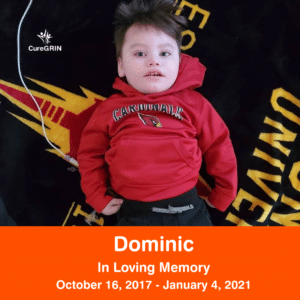GRIN Genetics 101: Understanding Your Kid’s Whole Exome Sequencing Report (WES)
Share This Post
When we become parents of rare disease kids, we’re expected to become everything from physiotherapist to pharmacist overnight. This post is a primer to help you embrace your inner geneticist. It’s based on what I learned when I was trying to understand my son Bryson’s Whole Exome Sequencing Report.
The DNA Alphabet
There are only four letters in the DNA alphabet (A, C, G and T). Every human has approximately 6.4-billion of these letters (also known as bases, base pairs, or nucleotides) in their DNA. Half of these are inherited from mom and half from dad.
These letters broken down into big chunks (chromosomes), which can be divided into smaller chunks (genes).
Each GRIN gene is located in a different chromosome and each has a different length.
GRIN 1; Chromosome 9; 2,814 letters
GRIN2A; Chromosome 16; 4,392 letters
GRIN2B; Chromosome 12; 4,452 letters
GRIN2D; Chromosome 19; 4,008 letters
Missense Variants
I’m going to use my son Bryson’s variant as an example. Bryson’s nucleotide change is written as c. 1858G>A. This means that if you count 1,858 letters into the code for Bryson’s GRIN1 gene, where there should be the letter G, instead there’s the letter A. This is known as a missense mutation, meaning the code contains a single incorrect letter. The majority of GRIN variants are single gene missense variants like Bryson’s.
Genes carry instructions for the body to build proteins out of amino acids. Every three letters of code forms a DNA “word” that creates a single amino acid. All of these amino acids come together to create a protein. The protein that is created by the GRIN1 gene is known as GLuN1; GRIN2A forms GluN2a, etc.
Bryson’s protein change is written as Gly620Arg or G620R. This means that the 620th amino acid created by the DNA should be an amino acid called Glycine (Gly or G), but because of the spelling error in slot 1858, his body creates an amino acid called Arginine (Arg or R) instead. Arginine is a larger amino acid and it’s got a different electrical charge from Glycine. As a result, the protein might change in size, shape and electrical charge.
Note that the number listed in the nucleotide change section of the report will always be approximately three times the number listed in the protein change. This is because amino acids are coded in triplets (every 3 letters of DNA creates a single amino acid). For example, the nucleotide change for Bryson is in position 1,858, which is roughly three times the position of the protein that is changed (620).
Amino acids can be spelled in different ways. For example, Glycine can be spelled four different ways (CCA, CCG, CCT, or CCC), while Arginine can be spelled six different ways. What this means is that it’s possible to have multiple versions of DNA changes that result in the same protein change. In the case of Bryson’s protein change, we know of other children who have the exact protein change, but different different missense variant. For this reason, the protein change is the most important number to focus in in order to find people with the same variant.
Other kinds of variants
Not all individuals with GRIN have missense variants. Here are some examples of other variants taken from the CFERV public database.
GRIN1p.His293insLD
The “ins” here is a signal that this is an insertion variant. This variant inserts two extra amino acids (L for Leucine and D for Aspartic Acid) where there should be a single Histadine amino acid (His).
GRIN1p.Ser560dup
The letters “dup” here refer to a duplication. This variant results in two copies of the 560th amino acid Serine.
GRIN2Ap.Pro31SerfsX107
The letters “fs” signal that this is a frameshift variant, where a whole sequence of letters get shifted, resulting in a series of incorrect amino acids. The first amino acid changed in this example is Proline (Pro) in position 31. It makes Serine (Ser) instead. This goes on for 107 Amino acids until the code encounters an errant “Stop” command which terminates the protein prematurely.
GRIN2Bp.Ala758_Thr760del
The letters “del” signal that this variant is a deletion. It results in a deletion of three different amino acids, number 758 (which should be Ala for Alanine) through 760 (which should be Thr or Threonine).
Learn More About GRIN Genetics
Last year, I did a webinar titled Genetics 101 for GRIN Families for with Eriskay Liston, a genetics counselor at Toronto’s Hospital for Sick Children. You can watch it here.
Read more Posts

Lessons Our Family Members with GRIN Disorder Teach Us
Share This Post Share on facebook Share on linkedin Share on twitter Share on email Many parents agree that having a child with GRIN Disorder

Dominics Legacy
One family’s unimaginable loss is providing hope for other GRIN families.
